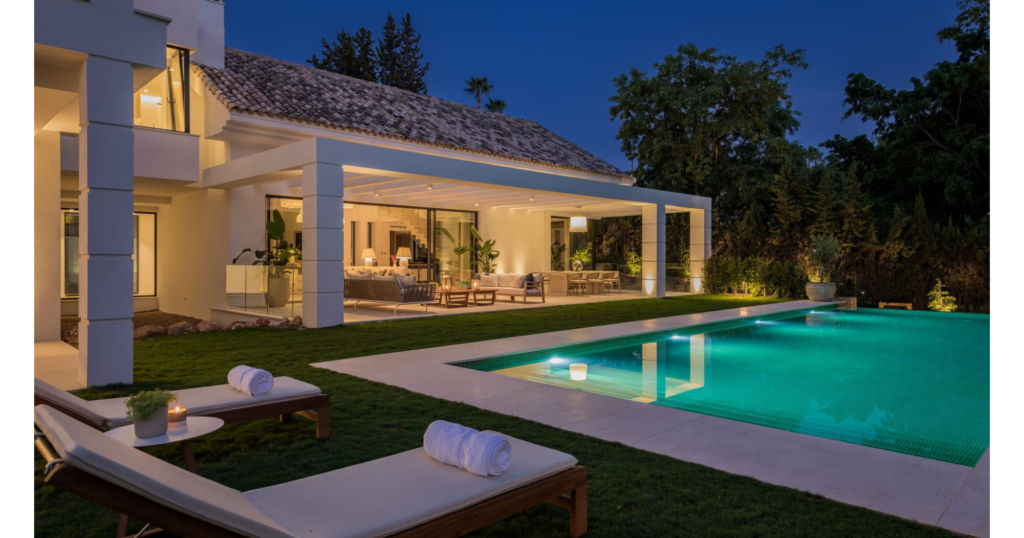- Use Sustainable Materials
One of the first steps in creating a natural and sustainable home is using environmentally friendly materials. Some excellent options to consider include bamboo, reclaimed wood, natural stone, and recycled glass. These materials are not only environmentally friendly but also add a beautiful natural touch to any home.
- Embrace Biophilic Design
Biophilic design is a concept aimed at connecting people with nature by incorporating natural elements into the built environment. This can include things like green walls, indoor gardens, and natural lighting. By bringing nature indoors, biophilic design can improve air quality, reduce stress, and enhance overall well-being.
- Use Healthy and Eco-Friendly Wall Coverings
Natural materials such as wood, bamboo, stone, and cork can provide healthy and eco-friendly wall coverings, using entirely natural materials. Additional eco-friendly wall coverings include low-VOC (volatile organic compound) materials, which emphasize products without the addition of substances that can harm indoor air quality and cause health issues for home occupants. There are also advanced wall coverings made from recycled materials, such as wall coverings made from advanced plant-based materials and recycled metals, which can provide healthy and eco-friendly wall coverings as well.
In the end, it’s important to choose wall coverings that fit the style and design needs of your home while also aligning with their health and environmental purposes.
- Have You Heard of Eco-Friendly and Healthy Faucets?
Recommended materials for eco-friendly and healthy faucets are those that do not contain harmful substances and help maintain water quality in a healthy and ecological way. Some examples of eco-friendly and healthy materials for faucets include:
Stainless Steel: Stainless steel is an eco-friendly and healthy metal material suitable for faucets. It does not release harmful substances and does not require chemical treatment to keep it in excellent condition. Stainless steel is also resistant to chlorine, soap, and other aggressive substances.
Al-Brass (Alloyed Brass): Al-brass is a stable and durable material suitable for faucets. It is resistant to chlorine, soap, and does not release harmful substances.
These are just partial examples of faucet materials, and it is advisable to consult with a professional to get a broader picture. In addition, to ensure that your faucets are eco-friendly and healthy, look for appropriate certifications and labels on the products you intend to purchase. Moreover, it is recommended to choose faucets that operate with advanced water-saving systems, allowing you to reduce water consumption and protect the environment. A corroded, worn-out faucet may negatively impact the environment. Vacuum deposition technology, making the coating an integral part of the faucet, helps maintain the faucet’s condition and protect the environment. This technology is known as PVD (Physical Vapor Deposition).
- Air-Purifying Plants Improve Indoor Air Quality
Plants can serve not only as beautiful and refreshing additions to your home but also as natural tools for purifying the air indoors. Air-purifying plants can help make the air cleaner, thus preserving your health and the air quality in your surroundings. First and foremost, to take care of your plants, you should choose large windows that allow plenty of natural light to enter your home (this also assists with natural lighting and energy savings). Opt for plants with large leaves, as they produce more oxygen than smaller ones. Another factor to consider is selecting plants that are efficient against pollution. Plants like Asplenium, Plectranthus, Pothos, and Eucalyptus are considered air-purifying plants and can help cleanse the air of pollutants and toxins. Of course, there are many types of plants that contribute to various aspects (convenience, plants that produce more photosynthesis, etc.), and the best information can be obtained through consultation with a professional specializing in this type of design.
- Use Organic and Natural Fabrics and Textiles
Using organic and natural fabrics and textiles benefits the environment in several ways. Firstly, these fabrics are grown without the use of harmful pesticides or synthetic fertilizers. This means that the soil, water sources, and local wildlife are not exposed to toxic chemicals that can harm the ecosystem and biodiversity. Secondly, natural fibers like cotton, hemp, and bamboo require less energy and water for production compared to their synthetic counterparts like polyester or nylon. This reduces greenhouse gas emissions and conserves precious natural resources.
Lastly, choosing organic and natural fabrics supports sustainable farming practices and fair labor standards. It helps promote healthier communities and economies while reducing the environmental impact of garment production. In summary, using organic and natural fabrics is an excellent way to reduce your ecological footprint and support a more sustainable fashion industry.
- Incorporate Smart Technology
You can use smart technology to improve energy efficiency, security, and convenience in your home. Features like smart thermostats, lighting control systems, and automated windows can save energy and make your home more comfortable. Additionally, smart home security systems offer peace of mind and allow you to monitor your home from anywhere.
- Consider Passive Home Design
Passive home design is a building standard that focuses on creating structures with exceptionally low energy requirements for heating or cooling. It achieves this through a combination of high-performance insulation, airtight construction, and efficient ventilation systems. Passive home design can significantly reduce energy bills and carbon emissions.
- Use Energy-Efficient Appliances
Energy-efficient electrical appliances can save you money on energy bills while reducing your carbon footprint. Look for appliances with the ENERGY STAR label, which signifies that they meet strict energy efficiency standards.
- Install Renewable Energy Systems
Renewable energy systems such as solar panels and wind turbines can provide clean energy for your home. While these systems may have a high upfront cost, they can save you money in the long run and reduce your reliance on fossil fuels.
In summary, natural, and smart home design is an excellent way to create a living space that is both environmentally friendly and modern. By using sustainable materials, adopting biophilic design, incorporating smart technology, optimizing indoor air quality, using energy-efficient appliances, and installing renewable energy systems, you can create an efficient, comfortable, and healthy home. As we move towards 2024, these design tips will become increasingly important for creating a sustainable future.






